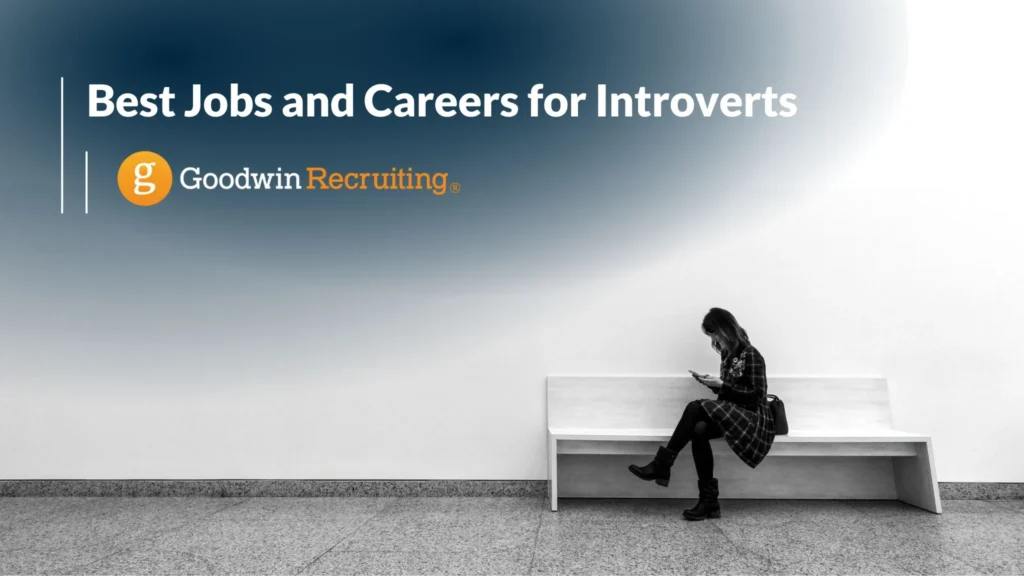
If you follow the news, it’s impossible to miss the reports of widespread talent shortages affecting companies across the United States. While the post-pandemic talent shortage is a serious challenge for today’s employers, it is simultaneously opening doors for job seekers, shortening paths to long-term career goals, and in many cases, satisfying the desire for a different way of working and living.
Eric Goodwin, President and CEO of Goodwin Recruiting, says that companies are in a transformational time. “Companies no longer hold all the cards, and a pay increase might not be enough to encourage top talent to join an organization these days.”
How is today’s hiring market different than it was pre-pandemic and in decades past? And how are professionals tapping this new reality to improve their careers and lives? Read on to learn what is happening and how you can position yourself for advancement in today’s job market.
The big picture on why things are different today
The mentality of the workforce has changed: The significant deficit in available (interested and willing) job candidates reflects a workforce looking for something different, something more or better than they have experienced in the past. During the pandemic, when companies were forced to change how they operate, there was an awakening among employees. More than a year later, it is impossible to unsee or let go of newfound experiences and prevalent desires.
People are leaving their jobs: The Wall Street Journal reported in mid-June that as the pandemic cloud lifts, the percentage of Americans leaving employers for new opportunities is at its highest level in more than two decades. In April, the share of U.S. workers leaving jobs was 2.7% (more than 3.9 million people), according to the U.S. Bureau of Labor Statistics, up from 1.6% a year earlier. It is currently at its highest level since at least 2000.
Here’s why: As the Journal and many other reports cite, factors driving the talent shortage and job departures are a perfect storm of motivations that manifested during the pandemic. After more than a year of pandemic life and work, people don’t want to return to business as usual. They have become accustomed to and prefer working remotely. People are also reluctant to be in an office before the virus subsides, and many are burned out from high pandemic workloads and stress. Workers are also in pursuit of higher pay and more attractive benefits or incentives.
Why the desire for change is so strong – and why it won’t change: Employees and candidates want more rewarding careers that use their skills, offer new ones, and appeal to their interests and harmonize with their lives. These desires have long existed, but today is different. During COVID-19, people became desensitized to job security and more focused on satisfaction and quality of life. While millions of lives and careers were upended, values dramatically changed, and consequently, confidence grew to make a change. Stepping out is not the formidable threat it once was.
“People are seeing the world differently,” says Steve Cadigan, a talent consultant who led Human Resources at LinkedIn during its early years. “We’re going to see a massive shift in the next few years.”
That shift is happening right now, creating an abundance of opportunities for professionals.
Companies are changing: As a result of the current dynamics, seismic changes are occurring that favor the preferences and expectations of employees and job candidates. Job requirements are being relaxed, and responsibilities are being diversified to leverage candidates with fewer credentials or experience but who have promising potential.
Employers are rethinking how to attract and retain talent and making meaningful and permanent changes to their recruiting and talent management practices, as well as benefits, employee development programs, work-from-home (WFH) flexibility, and much more. Here are several examples of what is happening:
- The work-from-home experiment conducted by so many companies in years past has become a dominant strategy post-pandemic. Brett Wells, director of people analytics at Perceptyx, a company that works with Fortune 500 companies to survey employee opinion and sentiment, said the top reason people want to leave their jobs is the desire for flexibility, both in hours and the ability to work from home. “That’s at the forefront as offices start to go back,” Wells said. “If organizations don’t meet those demands, we’re going to see people vote with their feet.”
- The New York Times did a recent piece on how employers are getting creative in finding ways to get applicants in the door and retain people once they’re hired. They noted how competition for new hires is especially intense in the leisure and hospitality industry. For example, Applebee’s, wanting to hire 10,000 people this summer, announced vouchers for a free appetizer to anyone who scheduled an interview (“an app for an app”). Hoping for 10,000, the chain got 40,000 applicants as a result of the offer,
- Neil Irwin at the New York Times shared this from Christopher Floyd, owner of the hospitality industry recruitment firm Capital Restaurant Resources in Washington: “Traditionally in restaurants, it was: ‘Hey, this is the job. If you want these hours, great; if not, we’ll find somebody else.’ Now employers have to say, ‘You have the qualities we’re looking for; maybe we can work out a more flexible schedule that works for you.’ Employers are becoming much more cognizant that yes, it’s about money, but also about quality of life.”
- To attract workers this summer, Omni Hotels & Resorts is offering a range of incentives, including free hotel rooms for summer employees at some properties, guaranteed entry to the company’s management training program, and free nights at their Omni of choice. Members of the culinary team get a free set of knives and weekly sit-downs with the executive chef. In addition, Omni’s summer hires get a $250 signing bonus plus a $500 retention bonus at the end of the season.
Make no mistake – the new reality faced by employers reaches far beyond the hospitality industry, impacting companies across blue and white-collar jobs and industries nationwide. Confronted with the loss and shortage of talent, employers are in proactive mode, increasing wages, benefits, and promotions and using other strategies to attract and retain employees.
For example, at Schneider Electric North America, 65% of employees identified as high potential got promotions or new roles in 2020, according to Mai Lan Nguyen, the company’s senior vice president for Human Resources. “The best talent out there have many options,” she says.
Employees have the upper hand. And employers must make a shift to recognize this and work to attract talented individuals. While bigger paychecks, bonuses, flexibility, and training are all key elements, Eric Goodwin stated that “Culture and core values are going to have to play a bigger role in keeping employees engaged. We are on the precipice of a major systematic change in attraction and retention.”
Do you need help navigating this current job market? Goodwin Recruiting can help. Visit our job board for a list of open opportunities, and read our 10 tips on how to position yourself in today’s job market.
Share This Article







































